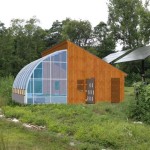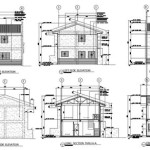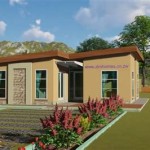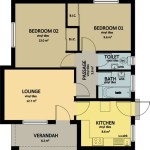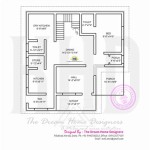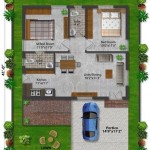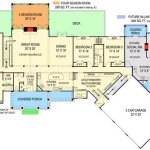Ranch House Remodel: Embracing Open Floor Plans
Ranch-style houses, characterized by their single-story layout and low-pitched roofs, represent a significant portion of the American housing landscape. Built primarily during the mid-20th century, many ranch homes feature compartmentalized layouts with distinct rooms serving specific functions. As lifestyles have evolved, homeowners often seek to modernize these dwellings by incorporating open floor plans. This remodeling approach aims to create a more fluid and communal living space, better suited to contemporary living patterns.
Remodeling a ranch house to accommodate an open floor plan involves strategic demolition, structural modifications, and thoughtful design considerations. The process requires careful planning to ensure the structural integrity of the building while maximizing the desired openness. Several factors contribute to the popularity of this type of renovation, including enhanced natural light, improved flow for entertaining, and a perceived increase in overall space.
Understanding the Structural Implications
One of the primary challenges in creating an open floor plan within a ranch house involves addressing structural supports. Load-bearing walls, which are crucial for supporting the roof and upper levels (if any), cannot be simply removed without proper reinforcement. Before any demolition begins, a qualified structural engineer must assess the existing structure to identify load-bearing walls and design appropriate support solutions.
Typical solutions for replacing load-bearing walls include installing support beams and columns. Steel beams are often favored for their strength and ability to span longer distances, minimizing the need for multiple support columns. The size and placement of these beams are determined through engineering calculations based on the roof load and span requirements. The integration of these structural elements into the design requires careful consideration to ensure both functional support and aesthetic integration.
Furthermore, the foundation must be adequate to support the redistributed weight resulting from the modified structure. An assessment of the existing foundation is often necessary to determine if any reinforcement is needed. This is especially critical in older ranch homes where the original foundation may not have been designed to support the concentrated load of a new support beam. Foundation modifications may involve underpinning, adding piers, or other techniques to ensure the house's long-term stability.
Hidden utilities like plumbing and electrical wiring present another challenge. Walls slated for removal often house essential services, requiring careful rerouting and reconnection. A licensed electrician and plumber are required to ensure that all work complies with local building codes and safety regulations. The relocation of these utilities must be meticulously planned to avoid disrupting existing services and to ensure accessibility for future maintenance.
Design Considerations for Ranch House Open Floor Plans
Beyond the structural modifications, designing a successful open floor plan in a ranch house requires thoughtful consideration of spatial organization and visual cohesion. The goal is to create a unified space that feels both open and functional, while maintaining a sense of definition between different activity areas. This can be achieved through a variety of design techniques, including the strategic use of furniture, flooring transitions, and changes in ceiling height.
Furniture arrangement plays a crucial role in defining different zones within the open space. For example, a large area rug can delineate a living room area, while a kitchen island can visually separate the cooking zone from the dining area. The placement of furniture should also consider traffic flow, ensuring that people can move easily through the space without feeling cramped or obstructed. Careful selection of furniture scale is important to prevent either overcrowding or a sense of emptiness.
Flooring transitions can also be used to create visual distinctions between different areas. For example, transitioning from hardwood flooring in the living room to tile in the kitchen can subtly define the space without the need for walls. Changes in flooring material not only demarcate zones but also contribute to the overall aesthetic appeal of the open floor plan. The selection of flooring materials should consider durability, maintenance, and the overall design style of the home.
Changes in ceiling height can further enhance the sense of spatial definition. Incorporating a vaulted ceiling in the living room can create a dramatic focal point and visually separate it from the adjacent kitchen or dining area. Alternatively, a dropped ceiling with recessed lighting can define a more intimate space within the larger open area. The addition of architectural details, such as beams or columns, can also contribute to visual interest and spatial definition.
Adequate lighting is essential for creating a comfortable and functional open floor plan. A combination of natural light and artificial lighting should be used to illuminate the space effectively. Large windows and skylights can maximize natural light, while strategically placed artificial lighting can supplement natural light and create different moods. Recessed lighting, pendant lights, and track lighting can be used to illuminate specific areas and highlight architectural features. Lighting design should also consider energy efficiency, with a focus on LED lighting and smart home integration.
Maximizing Functionality and Aesthetics
Achieving a successful ranch house remodel with an open floor plan involves more than just removing walls; it requires careful consideration of how the space will be used and how to maximize both its functionality and aesthetic appeal. This includes addressing practical considerations such as storage, ventilation, and acoustics, as well as incorporating design elements that reflect the homeowner's personal style.
Storage solutions are often a key consideration in open floor plans. Without walls to accommodate built-in storage, alternative solutions must be implemented. Kitchen islands with built-in storage, custom cabinetry, and strategically placed shelving can provide ample storage space without compromising the open feel. Multi-functional furniture, such as ottomans with hidden storage or coffee tables with drawers, can also help to maximize storage capacity.
Ventilation is another important consideration, particularly in the kitchen area. An open floor plan can make it more difficult to contain cooking odors and smoke. A high-powered range hood is essential for effectively removing these contaminants from the air. Proper ventilation also helps to prevent moisture buildup, which can lead to mold and mildew growth.
Acoustics can also be a challenge in open floor plans. Sound can travel easily through the unobstructed space, making it difficult to create quiet zones. Soft surfaces, such as rugs, curtains, and upholstered furniture, can help to absorb sound and reduce echoes. Soundproofing insulation can also be installed in walls and ceilings to minimize noise transmission.
Finally, the design elements of the open floor plan should reflect the homeowner's personal style. This includes the selection of colors, materials, and furnishings. A cohesive design scheme can help to create a unified and harmonious space. Incorporating personal touches, such as artwork, photographs, and decorative objects, can make the space feel more personal and inviting. The overall goal is to create an open floor plan that is both functional and aesthetically pleasing, reflecting the homeowner's individual taste and lifestyle.
Careful planning, expert execution, and a keen eye for design are essential for transforming a traditional ranch house into a modern, open-concept living space. By addressing structural considerations, optimizing spatial organization, and maximizing functionality, homeowners can create a more enjoyable and valuable living environment.

Completely Open Floor Plan In This Ranch Remodel Vaulted Ceilings Chrome Lighting And Accents Baystree House Designs Design Kitchen

Sopo Cottage Creating An Open Concept Living Space In A 1950 S Ranch Home

Case Study How To Fix A Bad Ranch Floor Plan Midmod Midwest

High Ranch Home Open Concept Kitchen Living Room Dining Combo And

Open Concept Ranch Floor Plans Houseplans Blog Com

High Ranch Update Kitchen Remodel Layout Open Floor Plan

How To Create An Open Concept Floor Plan In Existing Home Degnan Design Build Remodel

Sopo Cottage Creating An Open Floor Plan From A 1940 S Ranch Home Before After House Remodel Interior Concept Plans
How To Create An Open Concept Floor Plan In Existing Home Degnan Design Build Remodel

Inside This Ranch Remodel In Raleigh Hills


